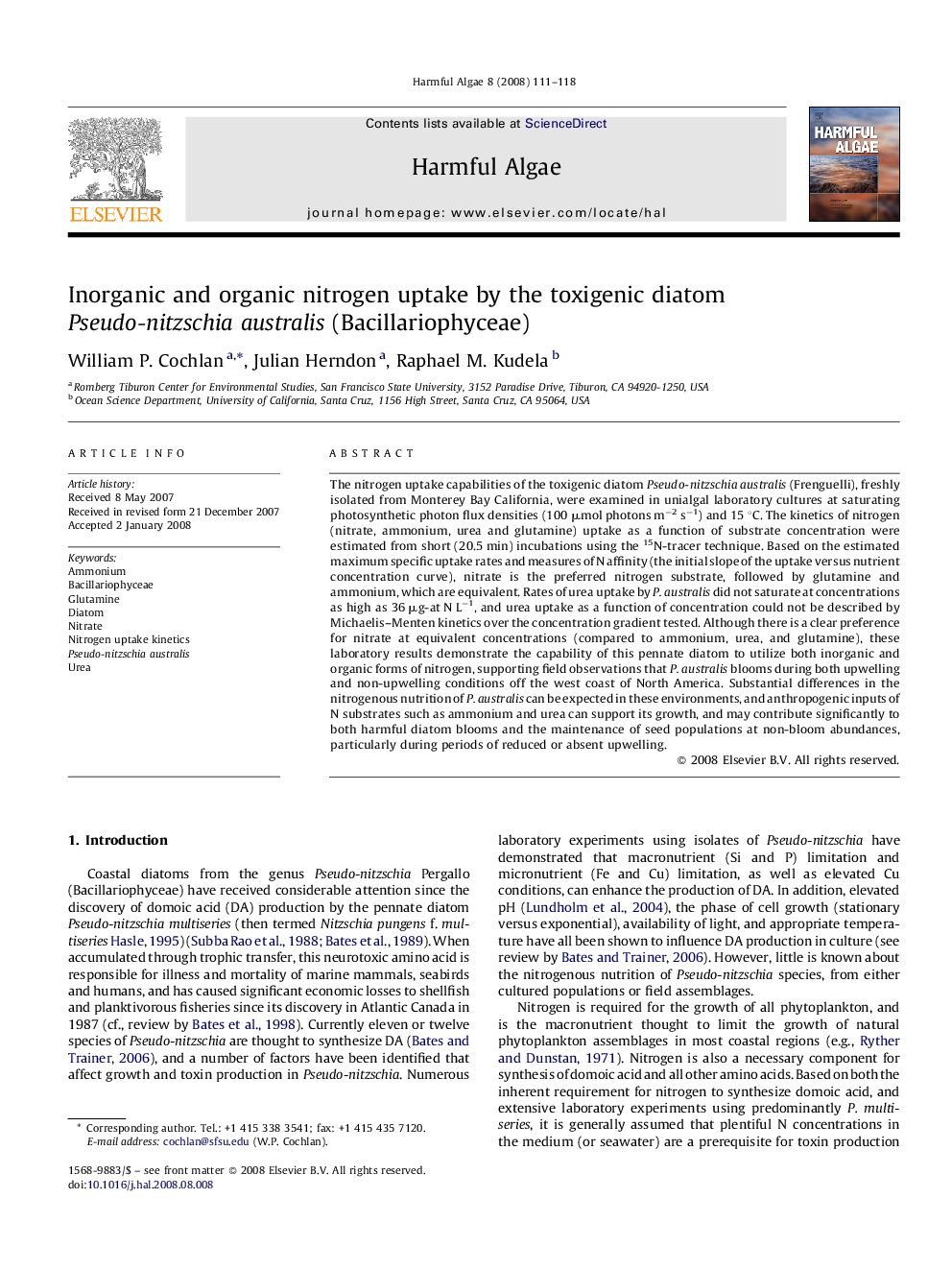| Article ID | Journal | Published Year | Pages | File Type |
|---|---|---|---|---|
| 4545923 | Harmful Algae | 2008 | 8 Pages |
The nitrogen uptake capabilities of the toxigenic diatom Pseudo-nitzschia australis (Frenguelli), freshly isolated from Monterey Bay California, were examined in unialgal laboratory cultures at saturating photosynthetic photon flux densities (100 μmol photons m−2 s−1) and 15 °C. The kinetics of nitrogen (nitrate, ammonium, urea and glutamine) uptake as a function of substrate concentration were estimated from short (20.5 min) incubations using the 15N-tracer technique. Based on the estimated maximum specific uptake rates and measures of N affinity (the initial slope of the uptake versus nutrient concentration curve), nitrate is the preferred nitrogen substrate, followed by glutamine and ammonium, which are equivalent. Rates of urea uptake by P. australis did not saturate at concentrations as high as 36 μg-at N L−1, and urea uptake as a function of concentration could not be described by Michaelis–Menten kinetics over the concentration gradient tested. Although there is a clear preference for nitrate at equivalent concentrations (compared to ammonium, urea, and glutamine), these laboratory results demonstrate the capability of this pennate diatom to utilize both inorganic and organic forms of nitrogen, supporting field observations that P. australis blooms during both upwelling and non-upwelling conditions off the west coast of North America. Substantial differences in the nitrogenous nutrition of P. australis can be expected in these environments, and anthropogenic inputs of N substrates such as ammonium and urea can support its growth, and may contribute significantly to both harmful diatom blooms and the maintenance of seed populations at non-bloom abundances, particularly during periods of reduced or absent upwelling.
